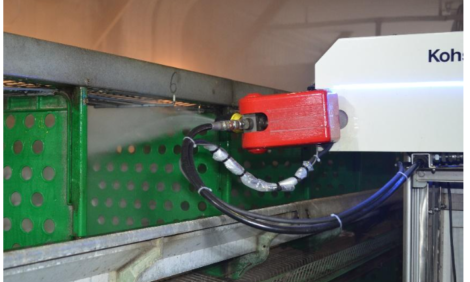



Evaluation of Animal Protein Meals on Nutritional Quality and Microbial Profile of the Gastrointestinal Tract
Intestinal microbial communities can be affected by animal protein meal in young chicks, according to researchers at Auburn University, and they found that the meals are a highly available source of phosphorus for broilers, regardless of ash content. They also found good agreement between different methods of assessing amino acid digestibility.Amino acid digestibility and phosphorus availability values for animal protein meals are both varied and limited, resulting in formulation of broiler diets based on ‘best estimates’, according to W.A. Dozier, III, K.S. Macklin, M.D. Lee, L. Speegle and J.B. Hess of the Poultry Science Department at Auburn University.
In a summary of research they carried out that had been sponsored by the US Poultry & Egg Association, they explain that the objectives of their study were:
- to characterise mineral content, proximate components and fat quality measurements of 30 animal protein meals and correlate pepsin digestible nitrogen and Novel Digestible Enzyme Assay – Poultry Complete (PC IDEA) values with standardised ileal amino acid digestibility (SIAAD) digestibility of 20 animal protein meal samples
- to evaluate the effects of six animal protein meals samples differing in amino acid digestibility and crude protein content on microbial profile of the gastrointestinal tract during a 28–day assay, and
- to determine phosphorus bioavailability of 10 animal protein meal samples differing in ash content.
Pepsin digestibility and PC IDEA were significantly correlated with SIAAD for each AA for all 20 APM sources.
The SIAAD of Lys and Met was predicted as:
% Lys SIAAD = [-9.65 + (0.38 × % PC IDEA predicted Lys digestibility) + (0.69 × % pepsin digestibility) and
% Met SIAAD = [-35.95 + (0.62 × % PC IDEA predicted Met digestibility) + (0.75 × % pepsin digestibility).
The prediction equation for Thr was:
% Thr SIAAD = [-77.55 + (0.39 × % PC IDEA predicted Thr digestibility) + (1.37 × % pepsin digestibility)].
Dendrogram, principal component analysis and multi–dimensional scaling differences indicated that the effect of age was more pronounced than APM source on the intestinal communities of the small intestine.
The age differences were apparent at seven and 14 days of age, and the age effect was less pronounced by day 28. Dendrogram analysis indicated that animal protein meal source influenced the microbiota of the small intestine (at seven and 14 days of age) and caeca (seven, 14, and 28 days of age). However, principal component analysis and multi–dimensional scaling demonstrated little effect of diet and indicated age–related effects on microbial communities.
Phosphorus content of the animal protein meals were highly available compared with monosodium phosphate. No differences were observed for shear strength, ash, and relative bioavailability among the 10 animal protein meals. These data suggest that phosphorus in animal protein meals is readily available to poultry.
Data indicated a significant relationship of PC IDEA and pepsin digestibility with SIAAD for APM diverse in nutrient composition and amino acid quality.
The Auburn scientists concluded that intestinal microbial communities can be affected by animal protein meals in the young chick when the gastrointestinal tract is immature. Animal protein meals are a good source of phosphorus for broilers, and the ash content of the meals did not appear to influence relative bioavailability.
May 2012









